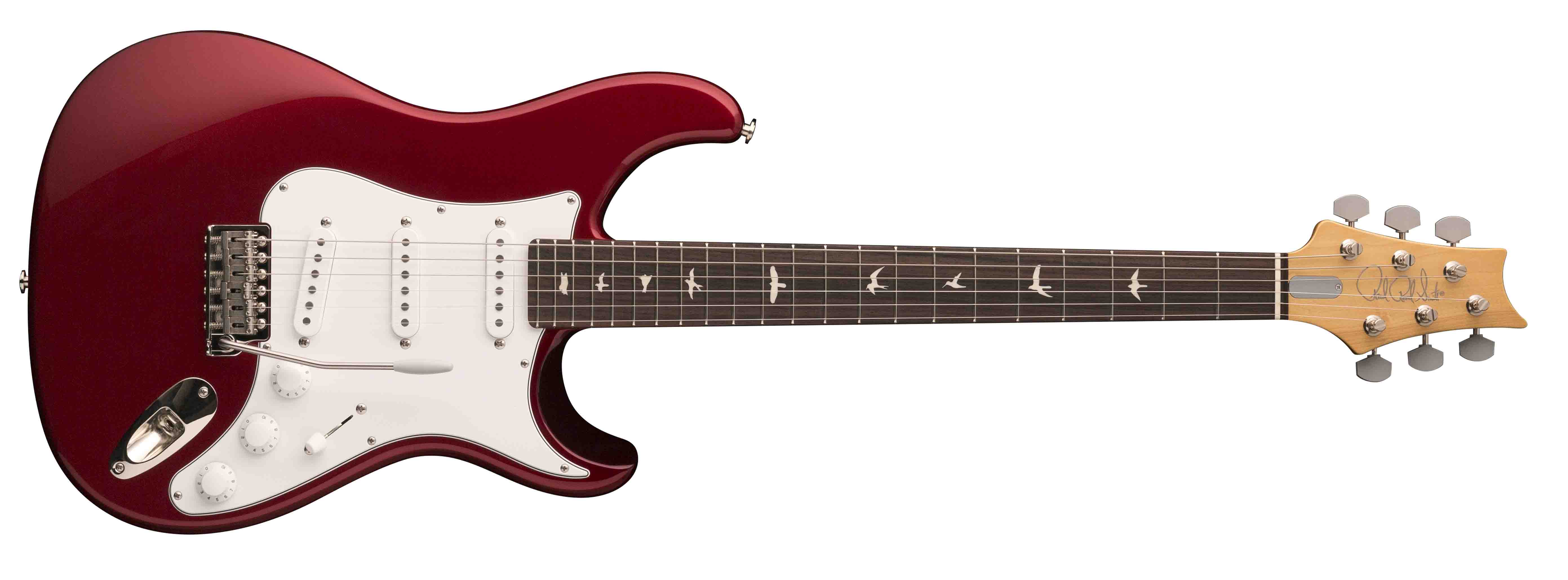John Mayer: I made the Silver Sky with PRS because Fender couldn’t “bring the vision that I had to life”
Blues hero talks controversial Strat-inspired signature guitar

MusicRadar's best of 2018: It’s fair to say the launch of John Mayer’s PRS Strat-a-like, the Silver Sky, earlier this year, provoked some… mixed reactions online. Now, the man himself has taken it upon himself to set the record straight.
I had an idea for a guitar that is sort of the future of the classic [Strat] design
In a 40-minute Instagram livestream, later hosted by The Music Space on YouTube, Mayer states, “I do not have an endorsement the way that Tiger Woods would have an endorsement with Nike. I didn't get money for working with Paul. That's not how it works.
“I had an idea for a guitar - and this goes back about 10 years - a guitar that is sort of the future of the classic [Strat] design.
“It was not going to work with Fender. They weren't gonna be able - one way or another - to bring the vision that I had to life. So - not pissed off - I wanted to go somewhere where they could bring that vision to life. And it made a lot of sense to go to Paul because that's the guy who started the company.
“To be able to call the guy who started the company on the phone and talk directly about ideas and how to build them - that's good for you. It's good to have artists be able to call the guy who runs the company. I couldn't do that really at Fender because it's musical chairs - you don’t know who to call.
“I get to call the guy whose name is on the guitar and we get to build stuff together. That's too cool.”
As well as demoing the guitar at length, Mayer also claimed he hasn’t set out to distance himself from Fender gear.
Get the MusicRadar Newsletter
Want all the hottest music and gear news, reviews, deals, features and more, direct to your inbox? Sign up here.
“I embrace the Fender thing,” he said. “I’ve seen people kind of disregard the Fender thing where they should regard it. As a customer at heart, I want to see people play Silver Sky through the Fender amp. Because that's what makes the sound. I was watching someone play through like a Victory amp and going, ‘Just play through a Fender!’
“This guitar is made to coexist with Fender amplifiers, with Fender guitars, with Gibson guitars, with any other guitar out there in the world. It's not trying to revise history; it's just a new way forward.”

“It's sort of a higher-definition Strat to me. I wanted to go in and take out a lot of those frequencies that you sort of have to work to roll off. They're not there now, they're just gone. So they're tuned a different way.
“And this is a part of a larger conversation about going into a guitar that's been around for 60 years and going, ‘What’s still valid and what's still vital and what can you go in and modify?’ And Paul Reed Smith and I went in and our saying was sort of this: ‘You take 100 Strats and two or three of them are magic. The question is, what makes those magic and how do you replicate that so you get 100 out of 100 guitars that are magic?’
Why did it take two years? It's striking a lot of people as sort of a farce that it took two years. Well, it's a game of millimetres when you deal with making a guitar that is based off of the Strat
“This has a lot to do with taking what my favourite ’64 Strat is. Taking the overall sensibility and tone of that guitar and giving it to people so that it becomes not something that's impossible to get for most people. I just love the idea of bringing it down to a place of accessibility for people. And I think to a certain extent that's really happened. Paul is a scientist as much as he is an artist.”
One aspect of the guitar’s press release that particularly raised eyebrows is the two years it took to build the Silver Sky - something Mayer also set out to clarify.
“Why did it take two years? It's striking a lot of people as sort of a farce that it took two years. Well, it's a game of millimetres when you deal with making a guitar that is based off of the Strat.
“Again, this guitar is based off of the Strat. I think if people understood that I'm admitting that - yes, I have played a Strat for such a long time in my career that it didn't make sense to me personally to look down and see a different shape, and I don't think other people would want to see a different shape.
“So here's the three places that you have to stick in between. You want to remain classic to a design that's almost synonymous with electric guitar. You want to innovate in a certain way so that you see something new. And you also want to respect the language of design that PRS guitars have. So everything has to balance - this is all a game of balance. It's two years because of balance.
“I didn't just go to Paul and say, ‘I have this idea. Make it for me or I'll go somewhere else.’ It was so much discussion.”
“There's a confluence of design that makes something when every detail is right, you look at it and it becomes one thing. It's not just six tuners and six machine heads and one nut and 21 frets. It becomes one really great thing. Cars have it, art has it, certain Apple products, Leica cameras... You look at it and it becomes an object of sort of visual kind of lust.”
“We have to get the sound the right way, the feel to be the right way, and you've got to turn around after you put it in the stand and go, ‘There we go!’”
Mike is Editor-in-Chief of GuitarWorld.com, in addition to being an offset fiend and recovering pedal addict. He has a master's degree in journalism, and has spent the past decade writing and editing for guitar publications including MusicRadar, Total Guitar and Guitarist, as well as a decade-and-a-half performing in bands of variable genre (and quality). In his free time, you'll find him making progressive instrumental rock under the nom de plume Maebe.
“It’s about delivering the most in-demand mods straight from the factory”: Fender hot-rods itself as the Player II Modified Series rolls out the upgrades – and it got IDLES to demo them
“This time it’s all about creativity… Go crazy. Do whatever you wanna do with it”: Budding luthiers, assemble! Harley Benton’s DIY Kit Challenge is now open and there are prizes to be won












